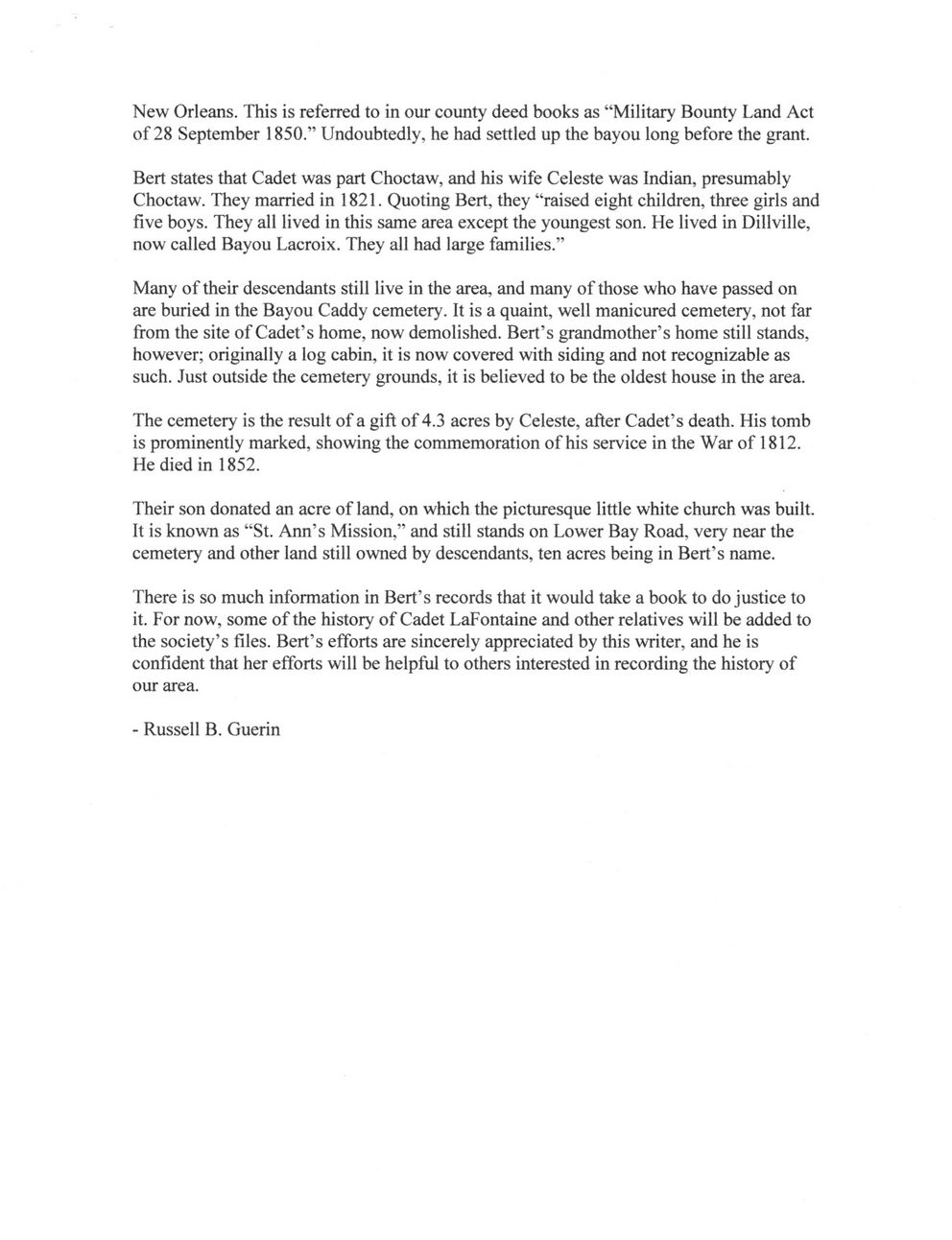This text was obtained via automated optical character recognition.
It has not been edited and may therefore contain several errors.
New Orleans. This is referred to in our county deed books as ?Military Bounty Land Act of 28 September 1850.? Undoubtedly, he had settled up the bayou long before the grant. Bert states that Cadet was part Choctaw, and his wife Celeste was Indian, presumably Choctaw. They married in 1821. Quoting Bert, they ?raised eight children, three girls and five boys. They all lived in this same area except the youngest son. He lived in Dillville, now called Bayou Lacroix. They all had large families.? Many of their descendants still live in the area, and many of those who have passed on are buried in the Bayou Caddy cemetery. It is a quaint, well manicured cemetery, not far from the site of Cadet?s home, now demolished. Bert?s grandmother?s home still stands, however; originally a log cabin, it is now covered with siding and not recognizable as such. Just outside the cemetery grounds, it is believed to be the oldest house in the area. The cemetery is the result of a gift of 4.3 acres by Celeste, after Cadet?s death. His tomb is prominently marked, showing the commemoration of his service in the War of 1812. He died in 1852. Their son donated an acre of land, on which the picturesque little white church was built. It is known as ?St. Ann?s Mission,? and still stands on Lower Bay Road, very near the cemetery and other land still owned by descendants, ten acres being in Bert?s name. There is so much information in Bert?s records that it would take a book to do justice to it. For now, some of the history of Cadet LaFontaine and other relatives will be added to the society?s files. Bert?s efforts are sincerely appreciated by this writer, and he is confident that her efforts will be helpful to others interested in recording the history of our area. - Russell B. Guerin

LaFontaine, Cadet 一document-048